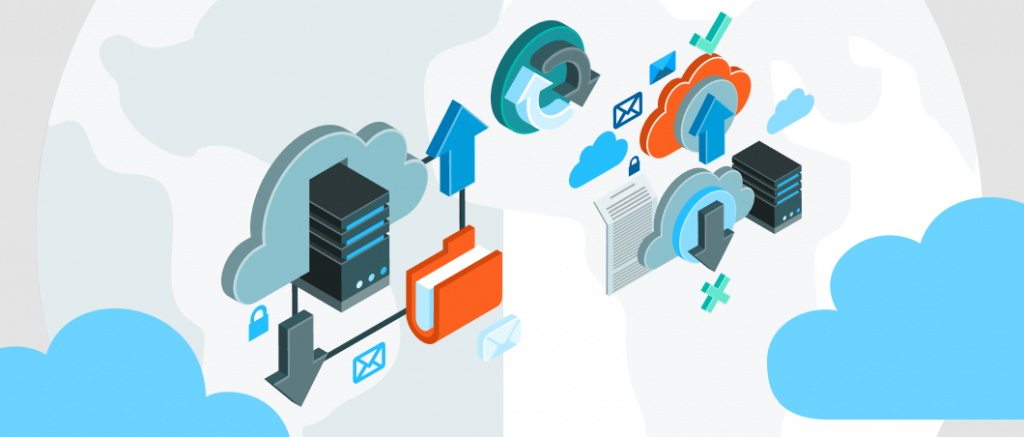Last updated on November 28th, 2022
By 2020, 83% of enterprise workloads will be in the cloud.
In the digital age, CIOs are always on the lookout to unlock new growth opportunities and help their organization innovate faster and better. Cloud infrastructure is an avenue that has been enthusiastically embraced across organizations. However, when it comes to accelerating the value of cloud computing for the modern enterprise, CIOs often struggle with some critical decisions, starting with – is cloud good for my organization? What areas or applications should I move to the cloud? What cloud is best for my organization?
The problem
Although the on-demand access to cutting-edge cloud capabilities is a great benefit, migration to the cloud often creates exasperation or concern regarding too much complexity and a choice-overload. The biggest issue that plagues organizations today is the problem of plenty:
- Choosing the right cloud deployment model: Private for sensitive workloads, public for everyday workloads, hybrid for best of both worlds, community for sharing infrastructure between organizations from a similar community, or distributed where the cloud platform is assembled from different machines in different locations and is connected to a single hub.
- Choosing the right cloud service model: SaaS to use cloud-based apps on the Internet, IaaS for accessing infrastructure provisioned and managed over the Internet, and PaaS for accessing development and deployment environment to build future-ready apps in the cloud, amongst others.
- Choosing the right cloud vendor: From Amazon, Microsoft, Salesforce, Oracle, IBM, Google, amongst others.
- Choosing the right cloud hosting partner: Based on the level and breadth of experience, technical expertise, service portfolio, security capabilities, price models, risk mitigation, customer support, and business continuity plans.
The approach
The clear benefits of transitioning to the cloud are clear -high flexibility, low operational costs, and improved performance and resiliency. But it is imperative to choose a cloud solution that offers the flexibility to meet the challenges of today and tomorrow. You need the ability to design and deploy applications that are fast, agile, and that deliver value for money. Here’s how you can navigate this cloud choice complexity:
-
- Make a strong business case: One of the first things to do when planning the cloud move is to determine your business needs – the processes you wish to optimize, the type of data you want to store, the number of devices you want to connect, and your budget. An understanding of where you stand today, and where the cloud can take you after a successful implementation is vital to make the correct cloud choice. Start by understanding the gains you expect to achieve with the migration – speed of operations, business agility, financial savings, improved customer experience etc. Understand what applications or workloads you want to move, and then choose the cloud deployment model that best fits your requirement.
- Evaluate your workloads: Another important consideration is the current workloads, processes, and architecture, and identifying what would benefit the most from the cloud. To build always on, always accessible applications, you need scalable servers, databases, and infrastructure that doesn’t break the bank while still offering the flexibility you need. Assess the business requirements to see which cloud model is right for you: do you just want to deliver applications to your users? Do you want to build customized applications? Or do you want access to highly scalable compute resources?
- Understand vendor capabilities: The cloud market is extremely crowded. To choose the best cloud vendor, it’s important to have a clear-eyed view of your business objectives. Are you looking to build mobile (or web) apps on the cloud? How much storage do you need? Do your workloads necessitate the need for high-performance computing? Since every cloud vendor offers a plethora of features and capabilities, all of these questions must be addressed. Take time to evaluate each vendor’s offering and see which vendor’s offerings fit your specific cloud needs – better computing infrastructure, more advanced tool-kits, higher processing power or higher security, among others.
- Understand the costs: No matter what cloud model or vendor you choose, cloud migration will cost time and money. Having a clear understanding of the costs associated with each model, the resources required, as well as operational and license costs will help you make the right cloud decision. For example, a public cloud might be a cheaper and more convenient option for basic workloads. However, for business-critical workloads, the highly secure but more expensive private cloud is a better choice.
- Evaluate various hosting partners: Deciding on the ideal cloud partner for your cloud deployment is vital. Would you prefer a phase-wise cloud approach or would you rather go all in? Do you want to move your workloads to a public cloud or private? Each cloud provider offers different features across service options, SLAs, KPIs, monitoring, data center capabilities, instance types, supported operating systems, migration strategy, backup policy, support options etc. Based on your requirement, assess the capabilities of each partner, and make the right partner choice.
Keep pace with innovation
In theory, cloud migration is simple, fast, and smooth. But in this complex cloud environment, with various cloud hosting and service models, vendors and partners, making the right cloud choice is a challenge for many. The barriers to moving from a traditional, on-premises model to the cloud are also real; long-standing contracts with third parties, lack of cloud experience, security and data protection concerns, incompatible technology, etc.
A variety of factors go into determining which cloud solution is perfect for you. From evaluating current business processes and workloads to understanding the costs associated, the features and capabilities of different cloud vendors, and the experience and expertise of cloud partners -these are all important considerations. But the cloud move, once made, has the potential to deliver benefits that make this pain worthwhile!



